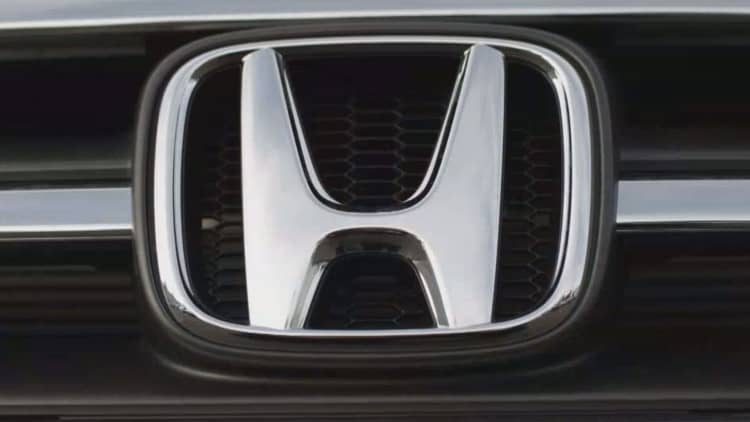
GM and Honda's deal to partner on developing an autonomous vehicle signals that the two companies don't want to take on all the risk, expense and engineering resources needed to develop a self-driving car.
Companies are finding ways to share the burden and keep costs down on what could be a long road to a true autonomous vehicle market — and an even longer haul before it's ready to sell to the masses at a profit.
"Our mission is to deploy this technology safely at massive scale," GM president Dan Ammann said Wednesday on CNBC's "Squawk on the Street." "That's going to require a lot of resources — not just financial resources but also engineering resources."
Kyle Vogt, CEO of GM subsidiary Cruise Holdings, told CNBC the deal will be a three-way partnership among GM, Honda and Cruise. The plan is to assemble a team and build an autonomous vehicle, though he did not give details on a timeline for the project or further details on the specific roles of each organization.
"We have our existing plans in motion to bring self-driving car technology to market, and then ultimately to scale it up," Vogt said in an interview. "We are going to start with the vehicle we have been working on for a long time, but this is really about what comes next when you remove the human driver sitting behind the wheel."
Starting with a completely new vehicle will allow the companies to consider all the different possibilities for a self-driving car and design everything else around it, rather than building self-driving tech onto an existing vehicle. Cruise is the group that is adding automated driving technology to GM's electric vehicle, the Chevrolet Bolt.
GM shares jumped more than 5 percent on the news.
"When you think about how much it costs to develop these future technologies — it's immense," Autotrader executive analyst Michelle Krebs said on CNBC's "Closing Bell." And we don't know when they'll be ubiquitous, when they'll get any return on that investment. So they're sharing the cost. They're sharing the risk."
Honda will invest $2.8 billion over the next 12 years, beginning with an immediate $750 million investment, and will take a 5.7 percent stake in Cruise Holdings. It follows Japanese conglomerate SoftBank's decision to invest $2.25 billion in Cruise in May.
Honda and GM have had a history of partnering on a number of technologies, such as batteries, powertrains, fuel cells. So it makes sense they would partner again, said Jeff Schuster, senior vice president of global forecasting at LMC Automotive, which tracks the auto industry.
"It is not new that they might come together to co-develop or spread the costs around, which is what I really think this play is," he said. "Everyone is racing to autonomy, but it is a marathon and it is going to take a lot of investment."
Schuster added the partnership allows them to develop a cutting-edge autonomous car "without burying your current operations, because you still have to make cars today, and you still have to develop new products for today's market."
It could also be a way for traditional automakers to stake out their territory in an area that has attracted a lot of investment from tech companies and "put them on notice," he said.
"There's a lot of investments that are being made like a roulette table on what technology and what company is going to survive," Jim Press, the former president of Toyota North America and Chrysler's former co-president, said on "Closing Bell." "But the fact of the matter is, there is going to be a significant growth in the popularity of these vehicles."
Schuster added that he suspects there will be more of these types of partnerships ahead, given how much capital will be needed before companies see any sort of return.
A recent LMC Automotive report said the firm does not believe that there will be a significant volume of vehicles that can be fully autonomous in any driving situation before 2030. It is so far away, it makes it difficult to predict winners, Schuster said.
"This is a trend we are going to be seeing more of going forward," said Sam Abuelsamid, senior research analyst at Navigant Research, who studies the auto industry and mobility technologies. "There is going to be increasing consolidation as companies that may have been struggling with their own autonomous driving efforts look to partner with others that are having more success and leverage their resources."
There are only so many ways to build an automated driving system, just as there have only been so many ways to build other systems on cars in the past, such as antilock braking systems, Abuelsamid said. Several companies tried developing their own systems in-house before realizing they were spending money on systems that did not give them any real competitive advantage over products already available from partners or suppliers.
"There are so many demands on automakers these days for plug-in hybrids, fully electric vehicles, autonomous vehicles, semi autonomous vehicles," Bob Lutz, GM's former vice chairman, told CNBC. "There is not enough engineering manpower to go around. And what this will permit, with Honda committing a certain number of engineers to the project, it can be realized a lot quicker."



